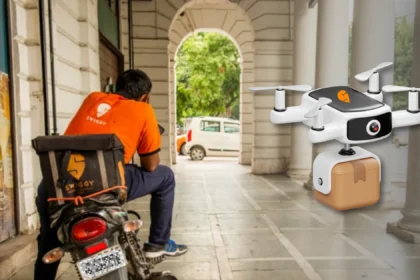Burger Singh has seen significant growth in its business, with projected top-line revenue of 130-140 crores. The store level economics and performance are looking promising, with each store generating around 14-17 lakhs in revenue per month, and an average of 20% AA. Currently, Burger Singh has a total of 150 stores, with 111 stores operating in tier two and tier three cities.
Store Distribution
- Tier one cities: 36-39 stores
- Tier two cities: 47 stores
- Tier three cities: 25-27 stores
With the aim of expanding further, Burger Singh has raised fresh funds to support its aggressive expansion plans. However, the brand is not just focused on scaling up, but also on innovating and evolving in the QSR space. One of the ways they are doing this is through the Burger Singh Express model.
Burger Singh Express
The Burger Singh Express model is a smaller, more nimble format that allows the brand to penetrate smaller cities. Unlike larger burger brands that require thousands of square feet of space, the Burger Singh Express model only needs 100 square feet. This compact model is portable and self-contained, with no need for water or drainage connections.
By utilizing the Burger Singh Express model, the brand can reduce rental and operational costs, making it a highly capital-efficient model. The return on investment (ROI) is also impressive, with a payback period of less than a year. Additionally, the location risk is minimized, as the model can easily be moved if a particular location doesn’t perform well.
With over 150 stores nationwide, Burger Singh is positioned as the third largest burger chain in India, trailing only two global giants in the space. The brand’s expansion strategy is focused on building a strong supply chain, with warehouses strategically located across the country. This allows Burger Singh to efficiently serve major cities and penetrate new markets.
While Burger Singh has ventured into international markets, such as London, their primary focus remains on the Indian market. With the lean and efficient Burger Singh Express model, the brand believes they can achieve significant growth within India itself, potentially reaching 2,000-3,000 stores. By staying focused on the Indian market, Burger Singh aims to tap into the immense opportunities within the country.
Aggressive Expansion Plans
Burger Singh is not just focused on scaling up, but also on innovating and evolving in the QSR space. One of the ways they are doing this is through the introduction of the Burger Singh Express model.
Innovation and Evolution in the QSR Space
With the aim of maximizing return on investment and capital efficiency, Burger Singh has developed the Burger Singh Express model. This model challenges the traditional idea of a large, square footage requirement for burger brands.
By associating the brand with a smaller, more nimble format, Burger Singh is able to penetrate smaller cities that are often underserved by larger burger chains. This innovative approach allows the brand to stay ahead of the competition and tap into new markets.
Introduction of the Burger Singh Express Model
The Burger Singh Express model is a compact, self-contained kiosk that only requires 100 square feet of space. Unlike larger burger brands that need water and drainage connections, the Burger Singh Express model can be easily installed and uninstalled, making it highly portable.
This smaller format not only reduces rental and operational costs, but also minimizes location risk. If a particular location doesn’t perform well, the kiosk can be easily moved to a new location, ensuring maximum profitability for the brand.
Advantages of the Kiosk Model
With the Burger Singh Express model, Burger Singh can reach new customers in airports, metros, hospitals, and universities. This versatile kiosk can be plugged into a wall like a vacuum cleaner, allowing for quick and efficient deployment.
From a capital efficiency perspective, the Burger Singh Express model is a game-changer. With a lower investment of 25 lakhs, the brand can achieve impressive returns on investment. The payback period for this model is less than a year, making it an attractive option for potential franchisees.
Capital Efficiency and ROI
By reducing rental and operational costs, Burger Singh can achieve greater capital efficiency and improve return on investment. The Burger Singh Express model allows the brand to reach new markets and maximize profitability, all while minimizing location risk.
The lean and efficient nature of this model sets Burger Singh apart from its competitors and positions the brand for significant growth within India itself. With the potential to reach 2,000-3,000 stores, Burger Singh is focused on tapping into the immense opportunities within the Indian market.
Par India Expansion Strategy
Burger Singh, positioned as the third largest burger chain in India, has developed an aggressive expansion strategy to further penetrate the Indian market. With over 150 stores nationwide, the brand is already making waves in tier two and tier three cities. However, their focus is not just on scaling up, but also on innovating and evolving in the QSR space.
Network Size and Ranking in the Burger Chain Market
Burger Singh’s current network consists of 150 stores, with 36-39 stores in tier one cities, 47 stores in tier two cities, and 25-27 stores in tier three cities. As the third largest burger chain in India, Burger Singh trails only two global giants in the space. This market ranking provides a solid foundation for the brand’s expansion plans.
Expansion Strategy Based on the Supply Chain
Burger Singh’s expansion strategy revolves around building a strong supply chain. The brand has strategically located warehouses across the country, including in North India, Mysana, Cal, and soon outside Bangalore. These warehouses allow Burger Singh to efficiently serve major cities and penetrate new markets.
Opening of Warehouses in Different Regions
By opening warehouses in different regions, Burger Singh ensures a steady supply of ingredients and reduces delivery time. This enhances the brand’s operational efficiency and enables them to cater to a larger customer base. The opening of a warehouse outside Bangalore will particularly support the brand’s penetration into Hyderabad, Bangalore, and Chennai.
Focus on Penetrating Specific Cities
While Burger Singh has ventured into international markets, such as London, their primary focus remains on the Indian market. With the lean and efficient Burger Singh Express model, the brand believes they can achieve significant growth within India itself, potentially reaching 2,000-3,000 stores. By staying focused on the Indian market, Burger Singh aims to tap into the immense opportunities within the country.
Global Expansion Plans
Burger Singh’s primary focus remains on the Indian market, where they believe they can achieve significant growth. While they have ventured into international markets, such as London, the brand aims to stay focused on India.
Potential Number of Stores in India
With the introduction of the Burger Singh Express model, the brand believes they can reach a potential number of 2,000-3,000 stores in India. This lean and efficient model allows for deeper penetration into the Indian market.
Staying Focused on the Indian Market
India is still a very large market with immense opportunities. By staying focused on the Indian market, Burger Singh can maximize growth and capitalize on the demand for their unique burger offerings.
Reasons for Avoiding International Expansion
While some brands may prioritize international expansion, Burger Singh sees the potential for growth within India itself. The lean and efficient Burger Singh Express model allows them to go deeper into the Indian market and achieve greater success.
Ability to Go Deeper in the Indian Market
With the Burger Singh Express model, the brand can establish a stronger presence in tier two and tier three cities, where there is significant growth potential. This allows them to tap into underserved markets and cater to a larger customer base.



